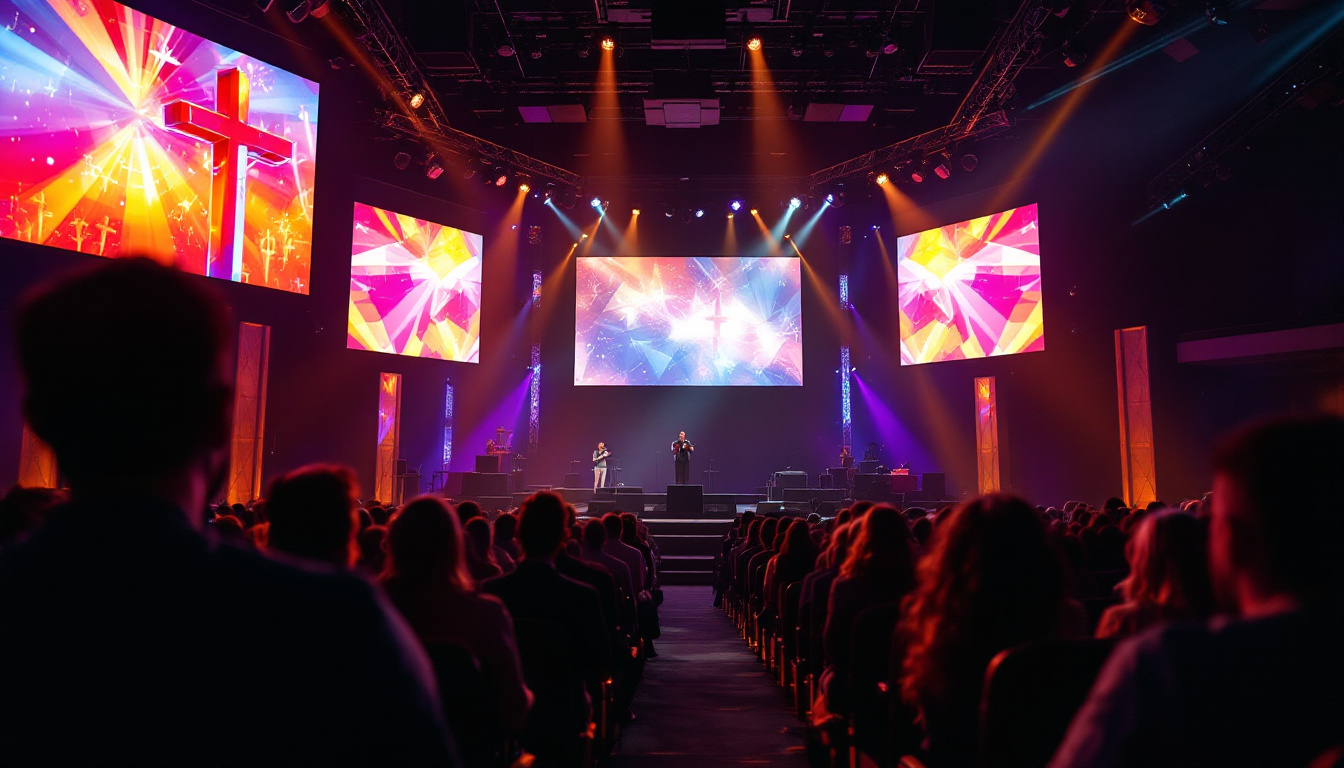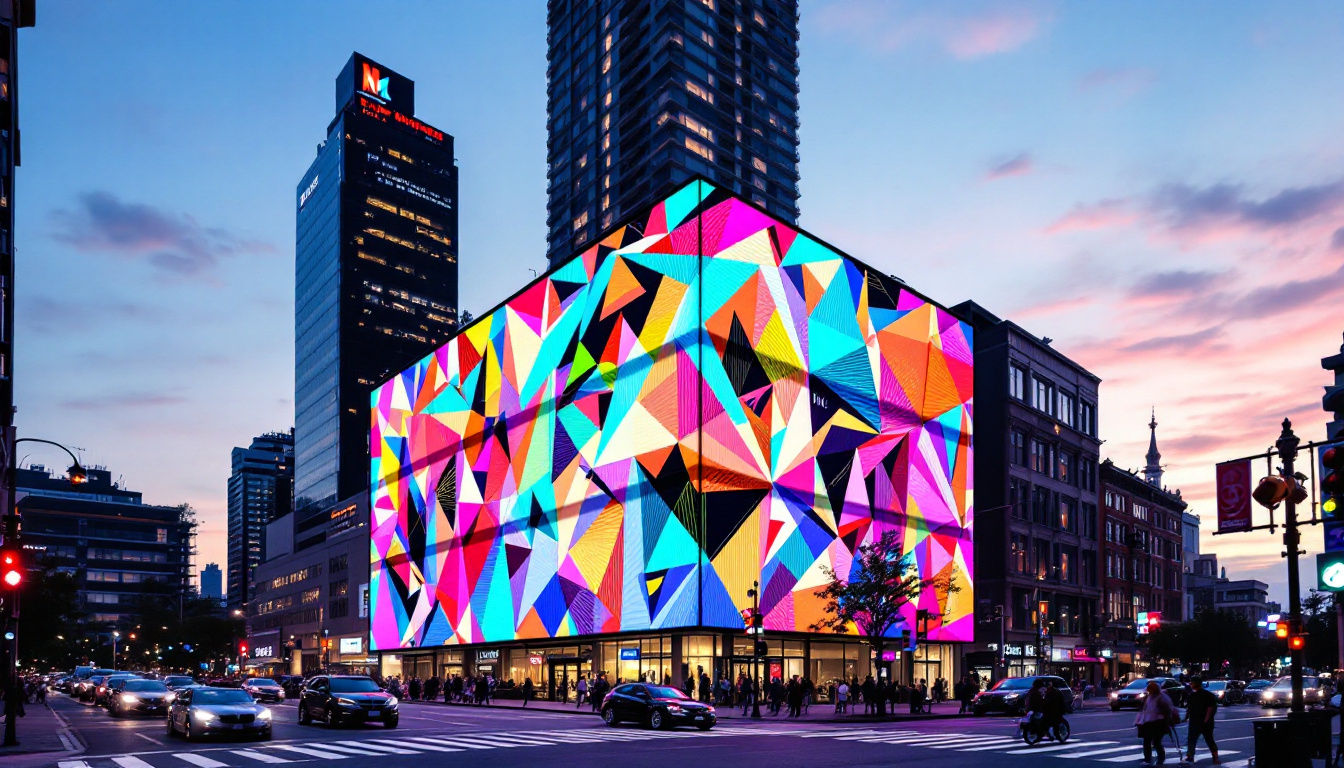In the modern era, churches are increasingly adopting technology to enhance their worship experience. One of the most significant advancements in this area is the use of LED displays. These vibrant screens have transformed how congregations engage with services, events, and community announcements. This article delves into the intricacies of LED displays in churches, exploring their benefits, types, and best practices for implementation.
Understanding LED Technology
LED, or Light Emitting Diode, technology has revolutionized the way visual content is delivered. Unlike traditional display technologies, LEDs offer a range of advantages that make them particularly suitable for church environments.
How LED Displays Work
LED displays consist of numerous tiny diodes that emit light when an electric current passes through them. These diodes are arranged in a grid, allowing for the display of images, videos, and text. The brightness and color accuracy of LED displays are superior to other technologies, making them ideal for various lighting conditions, including dimly lit church interiors.
Additionally, LED screens can be configured in different sizes and shapes, providing flexibility in design and installation. Whether a church needs a large outdoor display for announcements or a smaller indoor screen for service visuals, LED technology can accommodate these needs effectively. This adaptability extends to various mounting options, including wall-mounted, ceiling-hung, or even portable setups, allowing churches to maximize their space and tailor their visual presentations to fit their unique architecture and congregation size.
Benefits of LED Displays in Churches
The integration of LED displays in churches comes with a multitude of benefits. First and foremost, they enhance communication within the congregation. Important messages, song lyrics, and sermon notes can be displayed clearly, ensuring that everyone can participate fully in the service.
Moreover, LED displays are energy-efficient, which is a significant consideration for many churches operating on tight budgets. Compared to traditional projection systems, LED screens consume less power and have a longer lifespan, reducing maintenance costs and the need for frequent replacements. This efficiency not only contributes to lower utility bills but also aligns with many churches’ commitment to stewardship and sustainability, allowing them to allocate more resources towards community outreach and other mission-driven activities.
In addition to cost savings, LED displays provide an opportunity for enhanced creativity in worship. Churches can utilize dynamic visuals, animations, and video content to create an immersive worship experience that resonates with congregants of all ages. This capability can be particularly impactful during special events, such as holiday services or community gatherings, where engaging visuals can help convey the message and foster a deeper emotional connection. Furthermore, the ability to easily update content allows churches to keep their messaging fresh and relevant, adapting to the needs and interests of their congregation as they evolve over time.
Types of LED Displays
When considering LED displays for a church, it’s essential to understand the various types available. Each type serves different purposes and offers unique features that can enhance the worship experience.
Indoor LED Displays
Indoor LED displays are designed for use within church buildings. They are typically used for displaying sermon notes, worship lyrics, and multimedia presentations. These displays offer high resolution and brightness, ensuring that content is visible even in well-lit environments.
Many churches opt for modular indoor LED displays, which can be customized in size and shape to fit specific spaces. This flexibility allows for creative installations that enhance the overall aesthetic of the worship area.
Outdoor LED Displays
Outdoor LED displays serve a different purpose, primarily used for announcements, event promotions, and community outreach. These displays are built to withstand various weather conditions, ensuring durability and longevity.
Outdoor displays feature higher brightness levels to combat sunlight and are often larger than indoor versions. They are an effective way to reach out to the community, drawing attention to church events and services.
Mobile LED Displays
Mobile LED displays are versatile and can be transported to various locations for events, outreach programs, or community gatherings. These displays are mounted on trailers or trucks, making them easy to set up and dismantle.
Churches can use mobile LED displays to engage with the community in various settings, such as festivals, parades, or public events, effectively expanding their reach and visibility.
Best Practices for Implementing LED Displays
Integrating LED displays into a church setting requires careful planning and consideration. Several best practices can help ensure a successful implementation that meets the needs of the congregation.
Assessing Needs and Budget
Before investing in LED technology, churches should assess their specific needs and budget constraints. Understanding the primary purpose of the display—whether for enhancing worship services, community outreach, or both—will guide the selection process.
Additionally, it’s crucial to establish a budget that covers not only the initial purchase but also installation, maintenance, and potential upgrades in the future. This comprehensive approach will help prevent unexpected expenses down the line.
Choosing the Right Location
The location of the LED display plays a vital role in its effectiveness. For indoor displays, positioning should ensure maximum visibility for the congregation, avoiding obstructions that may hinder sightlines. Similarly, outdoor displays should be placed in high-traffic areas where they can attract the attention of passersby.
Consideration of lighting conditions is also essential. Indoor displays should be positioned to minimize glare, while outdoor displays must be bright enough to be seen in direct sunlight. Proper placement will enhance the overall impact of the display, ensuring that messages are communicated effectively.
Content Strategy
Having a clear content strategy is crucial for maximizing the effectiveness of LED displays. Churches should plan and curate content that aligns with their mission and enhances the worship experience. This can include sermon notes, song lyrics, announcements, and multimedia presentations.
Regularly updating content keeps the display engaging and relevant. Utilizing a content management system can streamline this process, allowing for easy updates and scheduling of different messages throughout the week.
Enhancing Worship Experiences with LED Displays
LED displays can significantly enhance worship experiences by creating a more immersive environment. By integrating visuals into services, churches can engage congregants on multiple levels, fostering a deeper connection to the message being conveyed.
Visual Storytelling
Visual storytelling is a powerful tool in worship. LED displays can showcase images, videos, and graphics that complement the sermon, helping to illustrate key points and themes. This not only aids in comprehension but also makes the experience more memorable for congregants.
For example, during a sermon about community service, a church could display images of past outreach events, allowing congregants to see the impact of their contributions. This visual connection can inspire further engagement and participation.
Interactive Elements
Incorporating interactive elements into LED displays can further enhance the worship experience. For instance, churches can use social media feeds to display live posts or comments from congregants during services, fostering a sense of community and involvement.
Interactive polls or surveys displayed on LED screens can also encourage participation, allowing congregants to share their thoughts and opinions in real time. This engagement can create a more dynamic and inclusive worship environment.
Challenges and Considerations
While the benefits of LED displays are numerous, there are also challenges and considerations that churches must address. Understanding these can help in making informed decisions about implementation.
Technical Challenges
One of the primary challenges of integrating LED displays is the technical aspect. Churches may need to invest in training for staff or volunteers to ensure they can operate the technology effectively. This includes managing content, troubleshooting issues, and maintaining the equipment.
Additionally, ensuring that the display is compatible with existing audio-visual systems can be a concern. Churches should work with experienced professionals to assess their current setup and determine the best solutions for integration.
Cost Considerations
While LED displays offer long-term savings in energy and maintenance, the initial investment can be significant. Churches should carefully evaluate their financial situation and consider financing options or fundraising campaigns to cover the costs.
It’s important to weigh the potential benefits against the expenses to ensure that the investment aligns with the church’s mission and goals. Transparent communication with the congregation about the reasons for the investment can also foster support and understanding.
Future Trends in LED Displays for Churches
The landscape of LED technology is continually evolving, with new trends emerging that can further enhance church experiences. Staying informed about these trends can help churches remain relevant and effective in their outreach efforts.
Advancements in Technology
As technology advances, LED displays are becoming more sophisticated. Innovations such as higher resolution displays, improved color accuracy, and enhanced connectivity options are making it easier for churches to deliver high-quality content.
Additionally, the integration of artificial intelligence and machine learning can streamline content management and enhance audience engagement. These advancements can provide churches with powerful tools to connect with their congregations more effectively.
Increased Interactivity
The trend toward increased interactivity is likely to continue, with more churches adopting features that encourage congregant participation. From live polling to interactive sermon notes, the possibilities for engagement are expanding.
As technology becomes more accessible, churches can leverage these tools to create a more dynamic worship experience that resonates with congregants of all ages.
Conclusion
LED displays represent a significant advancement in how churches communicate and engage with their congregations. By understanding the technology, types of displays, and best practices for implementation, churches can create vibrant worship environments that foster connection and participation.
As technology continues to evolve, the potential for LED displays in churches will only grow, offering new opportunities for storytelling, engagement, and outreach. Embracing these innovations can help churches fulfill their mission and enhance the worship experience for all.
Illuminate Your Worship Experience with LumenMatrix
Ready to elevate your church’s worship environment with the latest in LED display technology? Look no further than LumenMatrix, a pioneer in crafting immersive visual experiences that captivate and engage. From the intimacy of indoor services to the broad reach of outdoor gatherings, our comprehensive range of LED solutions—including Indoor and Outdoor LED Wall Displays, Vehicle LED Displays, and more—ensures that your message shines with clarity and impact. Discover how LumenMatrix can transform your worship space and connect with your congregation on a deeper level. Check out LumenMatrix LED Display Solutions today and witness the power of advanced visual communication in your church.































